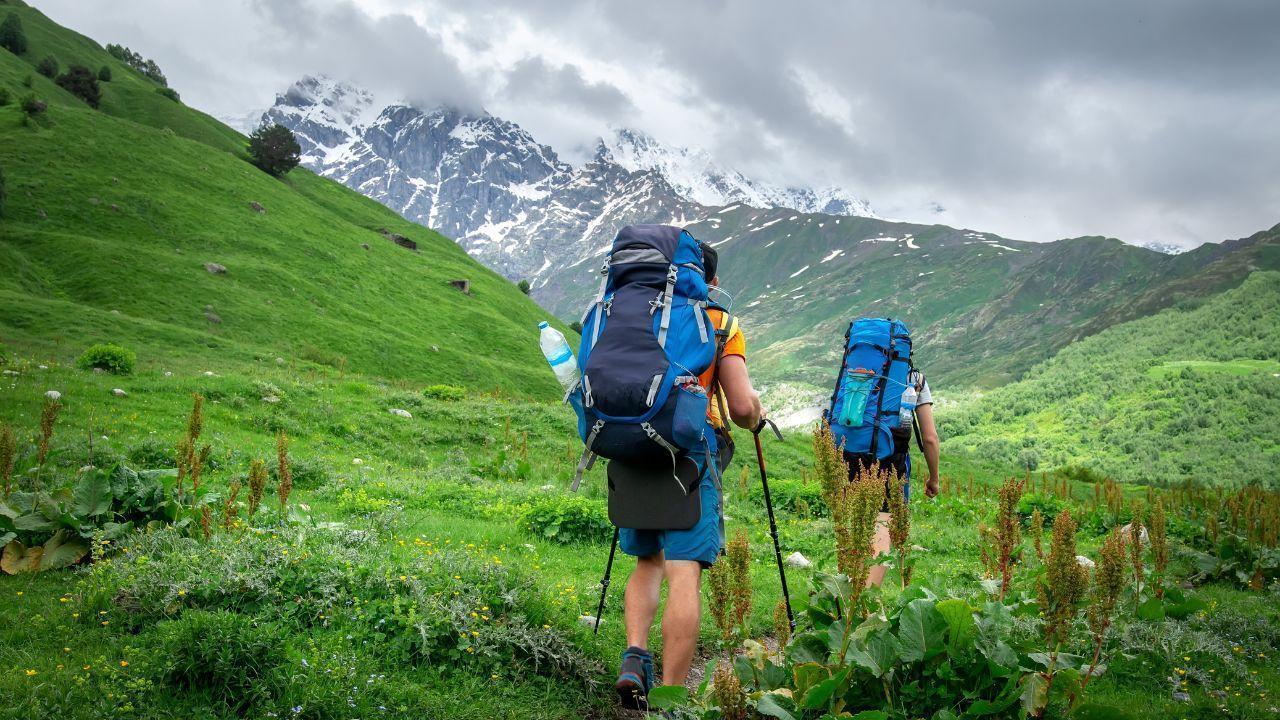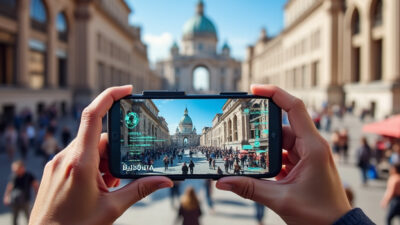Beyond the Obvious: Why Second-City Travel Is the Smart Choice in 2025
In 2025, second-city travel symbolizes a thoughtful evolution in vacationing, where the charm of lesser-known destinations wins over the clamor of crowded tourist spots. This shift not just lessens the strain on overloaded locales but enriches the traveler’s journey with authentic, undiluted cultural experiences.
The Shift Towards Second-City Travel
In 2025, travelers are increasingly bypassing overcrowded capitals and tourist hotspots in favor of second cities—lesser-known destinations that offer deeper cultural immersion without the frenzy of mass tourism. This shift isn’t just a trend; it’s a response to the growing frustrations of overtourism. Iconic cities like Venice, Barcelona, and Kyoto have reached saturation, with locals protesting, prices skyrocketing, and the very essence of these places diluted by endless crowds. The result? A growing appetite for authenticity, sustainability, and meaningful connections—qualities second cities deliver effortlessly.
Several key drivers fuel this movement. First, the rise of remote work has untethered travelers from rigid itineraries, allowing for longer stays in quieter locales. Second, social media has exposed hidden gems, shifting attention from overexposed landmarks to underrated cultural hubs. Third, sustainability concerns push travelers toward destinations with lower environmental footprints, where tourism revenue directly supports local communities rather than global chains.
Second cities also offer a more relaxed pace, letting visitors engage with traditions that haven’t been commodified for tourists. In places like Ghent instead of Brussels, or Porto instead of Lisbon, travelers discover vibrant arts scenes, untouched culinary traditions, and historic neighborhoods free from souvenir shops. The appeal lies in the unexpected—a chance to experience a destination as it truly is, not as a postcard version of itself.
As overtourism reshapes travel priorities, second cities emerge as the antidote: places where exploration feels personal, crowds are sparse, and every interaction carries the weight of authenticity. This shift isn’t just about escaping the masses—it’s about reclaiming the soul of travel.
Defining Second Cities
Second cities are often overshadowed by their more famous counterparts, but they hold a distinct charm that resonates with modern travelers seeking depth over hype. Unlike global hubs like Paris or Tokyo, second cities—such as Lyon or Osaka—offer a more intimate scale, where authenticity thrives and crowds are sparse. These destinations are not just smaller versions of capital cities; they are cultural powerhouses in their own right, often preserving traditions and local lifestyles untouched by mass tourism.
What defines a second city? Scale is a key factor—they are large enough to offer robust infrastructure and cultural attractions but avoid the overwhelming density of megacities. Authenticity is another hallmark; without the pressure of catering to millions of visitors, these cities retain their unique character, from family-run eateries to centuries-old festivals. Finally, hidden gems abound—think Porto’s tucked-away wine cellars or Valencia’s lesser-known modernist architecture—offering travelers the thrill of discovery.
Examples of second cities illustrate their appeal. In Italy, Bologna’s medieval arcades and thriving food scene rival Rome’s grandeur without the tourist swarms. In Germany, Leipzig’s vibrant arts and music culture provide an alternative to Berlin’s frenetic pace. These cities don’t just compete—they complement, offering a different lens through which to experience a country’s identity.
For travelers in 2025, second cities represent more than just an escape from crowds; they are gateways to deeper connections. By choosing these destinations, visitors engage with communities where tourism hasn’t diluted local life, ensuring a richer, more sustainable experience—one that aligns with the growing demand for meaningful travel.
Combating Overtourism
Overtourism has become one of the most pressing challenges in global travel, transforming iconic destinations into overcrowded, overpriced, and overexploited hotspots. Cities like Venice, Barcelona, and Kyoto now struggle with the consequences of their own popularity—environmental strain, rising living costs, and cultural dilution. The sheer volume of visitors overwhelms infrastructure, degrades natural landscapes, and disrupts the daily lives of residents, turning vibrant communities into transient tourist zones. The environmental toll is particularly severe, with increased carbon footprints from mass transportation, pollution from cruise ships, and damage to fragile ecosystems.
Second-city travel emerges as a strategic response to this crisis. By diverting travelers to lesser-known destinations, the pressure on overtouristed hubs eases, allowing them to recover while offering visitors a more sustainable and enriching experience. Cities like Ghent instead of Brussels, or Kanazawa instead of Kyoto, provide comparable cultural depth without the crowds. These alternatives often boast better-preserved heritage, lower prices, and more meaningful interactions with locals, who aren’t fatigued by constant tourist influx.
The shift also benefits local economies by distributing tourism revenue more evenly, fostering growth in regions previously overlooked. Unlike saturated destinations where profits often leak to multinational chains, second cities tend to have more locally owned businesses, ensuring that spending directly supports the community. This model aligns with the growing demand for responsible travel, where visitors seek to minimize harm while maximizing positive impact. By choosing second cities, travelers don’t just escape the crowds—they become part of a solution that preserves the authenticity and longevity of global tourism.
The Joy of Missing Out (JOMO)
In a world saturated with curated Instagram moments and bucket-list pressure, the Fear of Missing Out (FOMO) once dictated travel choices. But in 2025, a quieter revolution is taking hold: the Joy of Missing Out (JOMO). This philosophy rejects the frantic race to tick off landmarks in favor of deeper, more meaningful connections—something second-city travel embodies perfectly.
Unlike the overcrowded hubs where tourists jostle for the same photo ops, second cities invite travelers to slow down. Here, JOMO thrives. It’s about savoring a long lunch at a family-run trattoria in Bologna instead of battling queues in Rome, or meandering through the artisanal workshops of Porto rather than elbowing through Lisbon’s tourist traps. The emphasis shifts from quantity to quality—fewer destinations, richer experiences.
The rise of JOMO reflects a broader cultural shift. Travelers are prioritizing mental well-being over bragging rights, seeking immersion over itinerary overload. Second cities cater to this desire effortlessly. With fewer distractions, visitors engage more authentically—learning local dialects, participating in community festivals, or simply observing daily rhythms. This isn’t just travel; it’s cultural exchange.
Moreover, JOMO aligns with sustainable values. By bypassing overtouristed spots, travelers reduce their footprint while supporting lesser-known economies. It’s a win-win: visitors enjoy unhurried discovery, and communities retain their character without the strain of mass tourism. As the next chapter explores, this approach also unlocks economic and environmental benefits—proving that sometimes, the best way to experience the world is by not following the crowd.
Economic and Sustainable Benefits
Choosing second-city travel in 2025 isn’t just about escaping crowds or embracing JOMO—it’s a financially and environmentally savvy decision. While the previous chapter highlighted the joy of missing out on over-touristed destinations, this section dives into the tangible benefits of opting for lesser-known locales, where your travel budget stretches further and your footprint stays lighter.
Cost savings are a major draw. Unlike pricey capitals or tourist hubs, second cities often offer lower accommodation rates, affordable dining, and free or low-cost cultural experiences. A meal in Lyon costs significantly less than in Paris, while a boutique hotel in Porto is a fraction of Lisbon’s rates. These savings allow travelers to extend their stays or splurge on unique local activities, like private workshops with artisans or farm-to-table dining experiences.
From a sustainability perspective, second cities alleviate the strain of overtourism. Fewer visitors mean less pressure on infrastructure, reduced waste, and preserved ecosystems. Many of these destinations also prioritize green initiatives—think bike-friendly streets in Ghent or solar-powered hostels in Valparaíso. By diverting tourism traffic, travelers contribute to a more balanced distribution of economic benefits while minimizing environmental harm.
Moreover, these cities often foster authentic cultural exchanges. With fewer chain hotels and souvenir shops, local businesses thrive, ensuring your spending directly supports the community. Whether it’s a family-run winery in Mendoza or a cooperative weaving project in Chiang Rai, your presence has a meaningful impact.
In 2025, smart travel isn’t just about where you go—it’s about how your choices ripple outward. Second cities deliver value, sustainability, and deeper connections, proving that the best journeys are both economical and ethical.
The Rise of Second-City Popularity
The Rise of Second-City Popularity: Analysis of the growing appeal of second cities among global travelers, supported by recent data and trends.
In 2025, travelers are increasingly bypassing overcrowded capitals and iconic destinations in favor of second cities—lesser-known urban gems that offer richer, more distinctive experiences. Recent data from travel analytics firms reveals a 42% increase in bookings to second-tier destinations compared to pre-pandemic levels, signaling a fundamental shift in tourism behavior. This surge isn’t accidental; it reflects evolving traveler priorities. Modern explorers crave authenticity over Instagram backdrops, seeking connections with local life rather than scripted tourist encounters.
Several key factors drive this trend. First, overtourism backlash has made major hubs like Venice and Barcelona less appealing, as visitors grow weary of long queues, inflated prices, and a diluted sense of place. Second, digital nomadism and remote work have untethered travelers from rigid itineraries, allowing deeper dives into cities like Valencia instead of Madrid, or Porto over Lisbon. These destinations provide unfiltered cultural access—think family-run taverns, neighborhood festivals, and artisan workshops untouched by mass tourism.
Social media also plays a role. Platforms like TikTok and travel blogs now spotlight underrated locales, with influencers championing spots like Ghent (Belgium) or Da Nang (Vietnam) for their unspoiled charm. Meanwhile, airlines and rail networks are expanding routes to these cities, making them more accessible.
Ultimately, second cities thrive because they deliver what modern travelers value most: originality and human-scale exploration. As the next chapter will explore, this shift isn’t just about avoiding crowds—it’s about embracing cultures in their most genuine form.
Embracing Local Cultures
Second cities offer something rare in modern travel: the chance to live rather than just visit. Unlike major tourist hubs where interactions often feel transactional, these destinations invite travelers to step into the rhythm of daily life. Here, cultural immersion isn’t an add-on—it’s the essence of the experience.
One of the most compelling aspects of second-city travel is the unfiltered access to local traditions. In places like Lyon instead of Paris or Fukuoka rather than Tokyo, festivals, crafts, and rituals remain untouched by mass tourism. Visitors can learn pottery from a master in Kyoto’s quieter neighborhoods or join a family-run asado in Córdoba, Argentina. These moments aren’t staged for outsiders; they’re shared with genuine warmth.
Cuisine, too, becomes a gateway to deeper connections. While capital cities often cater to global palates, second cities preserve culinary authenticity. Think Naples’ backstreet trattorias or Hanoi’s lesser-known pho stalls, where recipes pass unchanged through generations. Travelers don’t just eat—they cook alongside locals, whether kneading dough in a Belgian bakery or foraging for herbs in Dalat’s highlands.
Community engagement thrives in these settings. With fewer language barriers and more openness, travelers often find themselves invited into homes, workshops, and even impromptu gatherings. A chance conversation in Porto’s Ribeira district might lead to a fado performance in someone’s living room, while a stroll through Medellín’s Comuna 13 could turn into a graffiti workshop with neighborhood artists.
These authentic exchanges redefine what it means to travel. Second cities don’t just offer escape—they offer belonging, even if just for a few days. As travelers seek more meaningful connections, these destinations deliver not just sights, but stories worth carrying home.
Notable Second-City Destinations in 2025
In 2025, second-city travel is no longer a niche trend but a deliberate choice for those seeking authenticity without the overwhelming crowds. While the previous chapter explored the cultural immersion these destinations offer, this section highlights specific cities that have emerged as standout alternatives to their more famous counterparts. These locations combine rich heritage, innovative energy, and a distinct local flavor that sets them apart.
Osaka, Japan, for instance, has stepped out of Tokyo’s shadow with its vibrant street food scene, historic merchant culture, and cutting-edge architecture. Unlike the capital’s fast-paced environment, Osaka offers a more relaxed vibe, where travelers can savor takoyaki in Dotonbori or explore the retro charm of Shinsekai. Similarly, Porto, Portugal has eclipsed Lisbon for many visitors, with its winding alleys, world-class port wine cellars, and a thriving arts scene rooted in its working-class identity.
In Southeast Asia, Chiang Mai, Thailand continues to draw travelers away from Bangkok with its lush mountains, ancient temples, and sustainable tourism initiatives. Meanwhile, Medellín, Colombia has transformed from a troubled past into a hub of innovation, boasting lush urban parks, a dynamic tech scene, and a welcoming paisa culture that contrasts with Bogotá’s formality.
Europe’s underrated gems like Leipzig, Germany—a creative hotspot with a thriving music and arts community—and Lyon, France, a gastronomic powerhouse often overshadowed by Paris, further prove that second cities deliver depth over hype. These destinations aren’t just alternatives; they’re redefining what meaningful travel looks like in 2025.
The Future of Travel
The travel landscape in 2025 is undergoing a quiet revolution, driven by a combination of technological advancements, sustainability imperatives, and shifting traveler priorities. Second-city tourism is no longer just a niche preference—it’s becoming a cornerstone of how people explore the world. As overcrowding and overtourism plague traditional hotspots, travelers are increasingly turning to underrated destinations for authenticity, affordability, and a deeper connection to local culture.
Technology is accelerating this shift. AI-powered travel platforms now curate hyper-personalized itineraries for second cities, highlighting hidden gems that mainstream guidebooks overlook. Augmented reality (AR) walking tours and real-time translation apps are breaking down language barriers, making lesser-known destinations more accessible. Meanwhile, blockchain-enabled loyalty programs reward travelers for choosing sustainable, off-the-beaten-path stays, incentivizing a move away from overcrowded hubs.
Sustainability is another critical driver. With carbon-conscious travelers seeking to minimize their environmental footprint, second cities—often better connected by rail and less reliant on mass tourism infrastructure—are emerging as eco-friendly alternatives. Urban planners in these destinations are leveraging smart city technologies to manage resources efficiently, ensuring that growth doesn’t come at the expense of local ecosystems.
Evolving traveler values also play a role. The post-pandemic era has cemented a preference for meaningful experiences over Instagrammable landmarks. Second cities, with their slower pace and stronger community ties, offer immersive cultural exchanges—think cooking classes in Lyon’s bouchons or artisan workshops in Porto’s backstreets. As travelers prioritize well-being and connection, these destinations will only grow in appeal.
Looking ahead, second-city travel isn’t just a trend—it’s the future. By 2030, these destinations could redefine global tourism, offering a blueprint for how to explore responsibly and richly.
Making the Most of Second-City Travel
Here’s the chapter text:
Second-city travel isn’t just about picking a lesser-known destination—it’s about unlocking a deeper, more authentic experience. To make the most of it, planning with intention is key. Start by researching local events, seasonal highlights, and neighborhood dynamics. Unlike major tourist hubs, second cities often have fewer online resources, so dig beyond the first page of search results. Look for local blogs, regional tourism boards, or even social media groups where residents share insider tips.
Finding hidden gems requires a shift in mindset. Instead of ticking off landmarks, seek out local favorites—markets, family-run cafés, or lesser-known cultural spots. Apps like Atlas Obscura or Spotted by Locals can help, but don’t underestimate the power of striking up conversations. Ask a barista for their favorite park or a shop owner for the best street food stall. These small interactions often lead to the most memorable discoveries.
Integrating into the community goes beyond just visiting—it’s about respectful immersion. Learn a few basic phrases in the local language, follow regional customs, and support small businesses. Consider staying in residential areas rather than tourist zones to experience daily life. Platforms like Airbnb Experiences or Meetup can connect you with locals who share your interests, whether it’s hiking, art, or food.
Finally, embrace spontaneity. Second cities thrive on unpredictability—a closed museum might lead you to a vibrant street festival, or a wrong turn could reveal a stunning viewpoint. Pack light, stay flexible, and let the city guide you. By approaching second-city travel with curiosity and openness, you’ll not only escape the crowds but also create a journey that feels uniquely yours.

Conclusions
As 2025 unfolds, second-city travel emerges not just as a trend but as a thoughtful recalibration of tourism’s future. Amidst the backdrop of overtourism and a revived appreciation for slow, meaningful travel, these destinations promise a return to authenticity, offering profound, personal encounters over mere sightseeing.



